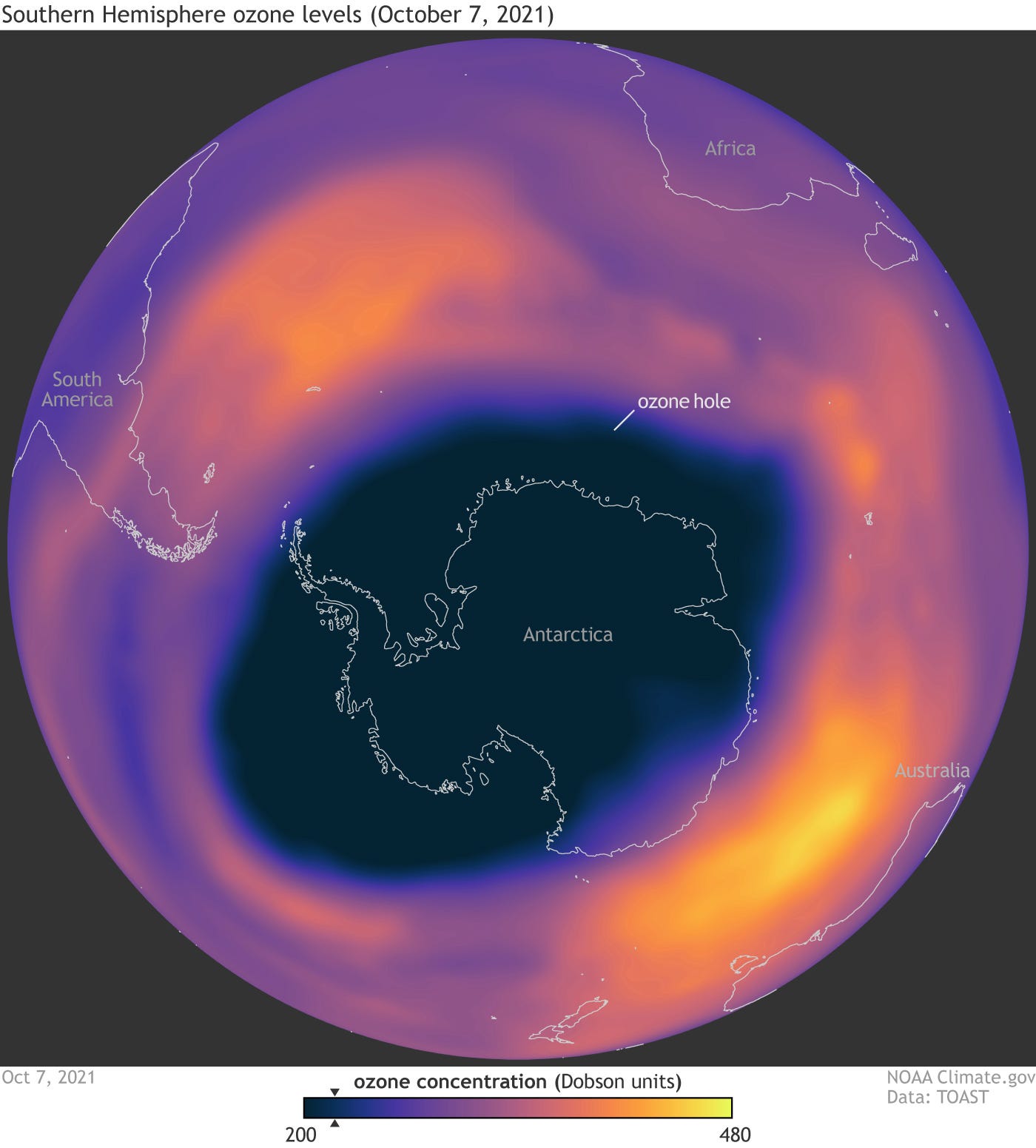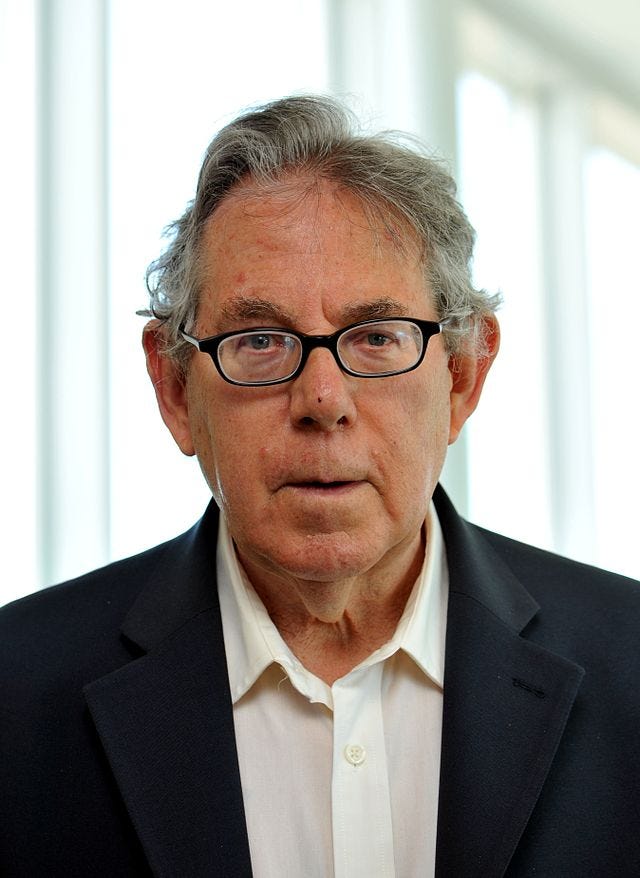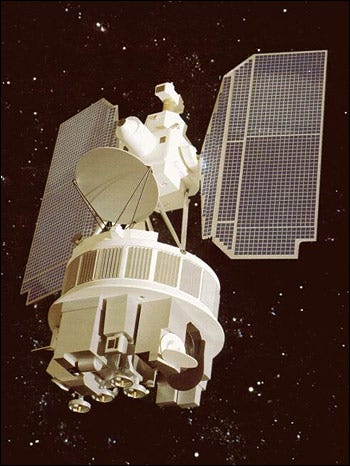A Hole in the Sky (Part 2)
The story behind the discovery of the ozone hole

Paul Crutzen's Groundbreaking Research on Ozone Depletion
Paul Crutzen (1933–2021), born in Amsterdam, was trained as a civil engineer. In 1959, he joined Stockholm University to study meteorology. His research was focused on atmospheric ozone, a field that at the time was viewed as pure science, unrelated to human activities. Crutzen’s research revealed how nitrogen oxides (NO and NO2), collectively referred to as NOx, affect stratospheric ozone. It was this groundbreaking work that eventually led to his Nobel Prize in Chemistry in 1995, shared with Mario Molina and F. Sherwood Rowland, “for their work in atmospheric chemistry, particularly concerning the formation and decomposition of ozone.” It was the first time the Nobel Prize has recognised research into man-made impacts on the environment.
During his post-doctoral fellowship at Oxford's Clarendon Laboratory in the 1970s, Crutzen studied more closely how chlorine-based compounds, such as pesticides and chlorofluorocarbons (CFCs), affect the ozone layer. He showed that emissions of nitrous oxide (N2O), commonly known as laughing gas, are long-lived enough to reach the stratosphere, hence affecting the level of nitrogen oxides in the stratosphere. He further argued that the increased use of fertilizers contributes to higher N2O emissions, linking human activities directly to ozone layer depletion.

In 1972, Paul Crutzen published a paper in the journal Ambio titled "SSTs - A Threat to the Earth's Ozone Shield," following Harold S. Johnston's 1971 Nature paper (Johnston, 1971), which highlighted the possible effects of nitrogen oxides emitted by supersonic transport aircraft on the ozone layer. Crutzen's paper detailed the ozone depletion process in the stratosphere and argued that “present knowledge indicates that there exists a real possibility of serious decreases in the atmospheric ozone shield due to the catalytic action of oxides of nitrogen emitted in the exhaust of supersonic aircraft.”
Already, as early as December 1970, the U.S. Senate had rejected further funding for the development of Boeing's civil supersonic transport (SST) prototype. This decision ultimately ended the SST program, resulting in the immediate layoff of 7,500 Boeing employees and contributing to the broader "Boeing Bust" aerospace recession. The Senate's decision was a response to the growing technical, environmental, and financial challenges associated with the project, including concerns about ozone depletion (Editorial, 1970). It was perhaps the first time that a futuristic technology of this sort was rejected, in part because of the cost, but also due to concerns over public health and its impact on the stratosphere.
The Environmental Policy Journey from Nixon to Carter
At the time, the President of the United States was Richard Nixon, whose environmental policy was surprisingly strong and progressive. The Santa Barbara Oil Spill in January 1969, the worst oil spill in the nation’s history – until 20 years later when the Exxon Valdez dumped 11 million gallons of crude off the coast of Alaska - was a turning point in the nation’s environmental history and changed forever the trajectory of oil and gas exploration in California.[1] In less than a year, Nixon signed the Endangered Species Conservation Act of 1969 and the National Environmental Policy Act of 1969, one of the first laws ever written for the protection of the environment, followed by the Clean Air Act of 1970, and the Marine Mammal Protection Act. On December 2, 1970, the United States Environmental Protection Agency (EPA) was born with the purpose of protecting human health and the environment.
A few months earlier in October 1970, the National Oceanic and Atmospheric Administration (NOAA) was established within the U.S. Department of Commerce. The creation of NOAA marked a significant milestone in the nation's commitment to environmental stewardship and scientific progress, and it remains at the forefront of environmental science and protection to this day.
But as the Watergate scandal unfolded, public pressure mounted, and investigations revealed Nixon’s role in the cover-up. Facing imminent impeachment, Nixon resigned from office on August 9, 1974, becoming the first president to do so, and Gerald Ford, who had been served as vice president since December 6, 1973 (following Spiro Agnew's resignation,) automatically assumed the presidency. Gerald Ford’s (1974-1977) lasting contribution to environmental stewardship was the legislation establishing fuel economy standards for vehicles (known as CAFÉ standards), in 1975. These standards conserved oil and helped reduce reliance on foreign oil producers. They saved an estimated 2.8 million barrels of oil per day and reduced carbon dioxide emissions by more than 1 million tons daily.
In 1976 Ford faced a tough challenge from Ronald Reagan, a leader of the conservative wing of the Republican party. After contentious primaries, Ford won the Republican nomination. However, in the general election in November 1976, he narrowly lost to Democrat Jimmy Carter (1977-1981), a president known for his strong emphasis on environmental policy. His administration made significant strides in promoting environmental protection and energy conservation. Renewable energy research and development, and he installed solar panels in the White House as a symbolic gesture to promote solar energy. When Ronald Reagan took office in 1981, he had the panels removed during a White House roof repair in 1986. They were not reinstalled, reflecting Reagan’s different approach to energy policy. The Solar panels came back to the White House rooftop under the Obama administration in 2014. These new panels are six times more powerful than the original panels installed by Carter in 1979 and are still there today.
Inside the White House: Solar Panels (youtube.com)
During that period the evidence that CFCs and other chemicals were depleting the ozone layer was growing. The Carter administration not only supported scientific research to better understand the impact of these substances on the ozone layer, but additionally in 1978 banned the use of CFCs as propellants in aerosol sprays in the United States. This marked a significant regulatory step in ozone protection.
The Ozone Hole Above Antarctica
Carter also supported funding and policies that enabled NASA to study the ozone layer. On October 24, 1978, the agency launched a new satellite, Nimbus-7 which carried two sensors, the Solar Backscatter Ultraviolet (SBUV) instrument and the Total Ozone Mapping Spectrometer (TOMS), crucial in understanding the extent and the seasonal variations of the ozone layer and providing reliable, high-resolution maps of global ozone amounts on a daily basis. [2] In 1981, Donald Heath, a NASA satellite researcher, “told EPA that satellite observations showed a 1-percent loss of global ozone.” W. Henry Lambright writes in The Case of Ozone Depletion, that the EPA characterised Heath’s views as “mildly suggestive.” Heath backed off. He later said, "There were many questions, but I still believed it was real. There was so much opposition to it; I sort of let it die. I thought I'd wait a while."
In 1981, Ronald Reagan replaced Jimmy Carter as President of the United States. One of Reagan’s major objectives was the reduction in government regulation of business, or, as he liked to put it, getting the government “off our backs.” However, he supported space exploration and considered it a governmental responsibility to fund basic research, including studies on stratospheric chemistry and research to study the Earth from space. [3]
In 1981, while conducting ground-based observations in the Halley Bay area of Antarctica, the British Antarctic Survey's researcher, Dr Joseph Farman, discovered that his instruments showed “that the spring values of total ozone (O3) in Antarctica have fallen considerably.” At first, he was sceptical. Existing models of ozone depletion had predicted a gradual ozone loss but nothing as big as what his instruments were showing. Over the next three years, Farman and his team repeated their experiments, and the results were the same each time, except that the ozone depletion over Antarctica grew progressively worse. Metaphorically speaking, there was a hole in the sky—an “ozone hole.” Farman decided that he could no longer maintain his silence in good conscience. In May 1985, his paper “Large Losses of Total Ozone in Antarctica Reveal Seasonal CIOX/NOX Interaction” was submitted to Nature.
After scientists digested the implications of Farman’s paper, the issue exploded into a huge national and international debate. Robert Watson, a British atmospheric chemist in charge of NASA’s Upper Atmosphere Research Programme (UARP), wanted to know why NASA’s satellites had not spotted the problem. His team went back into the Nimbus-7 archive to see if they had missed something. And indeed, they had. Orbiting Earth via the poles once every twenty-four hours, Nimbus-7 radioed the TOMS data on ozone back to the planet, but the computers that logged and “processed the received data had been programmed to reject any measurements lower than 180 Dobson units and treat it as an anomaly.”[4] In 1978, when the computer was programmed, nobody—except perhaps Rowland and Molina—could have thought that an ozone hole might exist. When NASA space scientists reprogrammed the data-analysis programmes, there it was, in beautiful living colours, what Farman and his colleagues discovered with the aid of their basic instruments: a deep hole in the ozone—the size of the continental United States—growing in intensity and length over the Antarctic continent and nearby oceans.

Scientists predicted that an additional 130 million cases of skin cancer would occur over the next century if the ozone hole were to spread to more populated places. They also pointed out that ozone depletion could cause widespread genetic damage to crops and forests, as well as boost the effects of global warming. In the words of Michael Oppenheimer, an atmospheric physicist with the Environmental Defence Fund, “Looking at the ozone hole is like staring at a picture where you watch the future of the human race go down a big black hole.”
From Vienna to Montreal: The Journey of Global Cooperation on Ozone Protection
The alarming discovery of the ozone hole spurred global action. Scientists, environmentalists, and policymakers began to advocate for a coordinated international response. Governments started to take diplomatic steps to address the issue, while the United Nations Environment Programme (UNEP) facilitated discussions among nations and meetings with scientists, policymakers and industry representatives. Already in 1981, UNEP had established the Ad Hoc Working Group on the Protection of the Ozone Layer, tasked with creating a framework for global cooperation to protect the ozone layer. The drafting process was complex and required balancing scientific recommendations, political considerations, and economic interests. Developing countries were particularly concerned about the potential economic impact of phasing out CFCs, while industrialized nations were more focused on the scientific and environmental imperatives.
After several years of negotiations, the Vienna Convention for the Protection of the Ozone Layer was adopted on March 22, 1985. It was a landmark agreement, marking the first time the international community had come together to address a global environmental issue. The Convention did not mandate specific reductions in CFCs but established a framework for research, monitoring, and information exchange among nations on the effects of human activities on the ozone layer. The Vienna Convection is still active today. The countries involved meet every three years to make decisions on research and observations of the ozone layer.
The Vienna Convention set the stage for more concrete actions. On September 16, 1987, despite the challenges, a consensus was reached and the Montreal Protocol on Substances that Deplete the Ozone Layer was signed by 46 countries. These nations committed to taking actions to reduce and eventually eliminate the production and use of substances that deplete the ozone layer, as well as providing financial assistance and technology transfer to help developing countries comply with the treaty.
The Road Ahead
The signing of the Montreal Protocol marked a pivotal moment in global environmental policy. Its success is often attributed to its dynamic structure, which allowed for adjustments based on new scientific findings, such as those made in London (1990), Copenhagen (1992), and especially Kigali (2016), which aim to reduce hydrofluorocarbons (HFCs) use by more than 80% over the next 20 years. While HFCs, another human-made chemical compound used in air conditioning, refrigeration, and aerosol propellants, do not deplete the ozone layer, they are a significant environmental problem due to their high global warming potential. This means that even small amounts of HFCs can have a substantial impact on global warming. The phase-down of HFCs is expected to avoid 0.5oC of global warming by the end of the century. However, since the air-conditioning units containing HCFs will linger for a very long time, achieving this goal will require a multifaceted approach involving regulatory measures, proper management of existing HFC-containing equipment, financial support, and robust monitoring and reporting mechanisms.
But the most important action we can take is to reduce nitrous oxide emissions from farms. By developing and adapting new, environmentally sustainable, and economically viable farming practices, we can achieve the dual benefit of mitigating climate change and protecting the ozone layer. In this way, we will preserve the planet while ensuring the well-being of current and future generations.
Sources and References:
Crutzen, P. (1972, April). SSTs - A Threat to the Earth's Ozone Shield. Ambio, 1(2), 41-51.
Crutzen, P. (1976). Upper limits on atmospheric ozone reductions following in creased application of fixed nitrogen to the soil. Geophys. Res, 3, 169-172.
Crutzen, P. J., Isaksen, I. S., & McAfee, J. R. (1978). The impact of the chlorocarbon industry on the ozone layer. J. Geophys. Research(83), 345-363.
Editorial. (1970, December 14). Supersonic Shock Wave. Aviation Week, p. 11. Retrieved from https://archive.aviationweek.com/issue/19701214
Farman, J. C., Gardiner, B. G., & Shanlkin, J. D. (1985, May 16). Large Losses of Total Ozone in Antarctica Reveal Seasonal CIOX/NOX Interaction. Nature(315), 207-210.
Greene, D. L., Greenwald , J. M., & Ciez , R. E. (2020, November). U.S. fuel economy and greenhouse gas standards: What have they achieved and what have we learned? Energy Policy, 146. doi:https://doi.org/10.1016/j.enpol.2020.111783
Gribbin, J. (1988). The Hole in the Sky. London: Corgi.
Johnston, H. (1971). Catalytic Reduction of Stratospheric Ozone by Nitrogen Oxides. Retrieved from Retrieved from https://escholarship.org/uc/item/2z96r6kx
Lambright, H. (2005). Ozone Depletion (Monographs in Aerospace History No. 38 ed., Vols. SP-2005-4538). NASA. doi:https://www.nasa.gov/wp-content/uploads/2023/04/sp-4538.pdf
NYT, E. (1987, September 19). The Hole at the Bottom of the World. The New York Times.
Schneider, S. H. (1990). Global Warming: Are We Entering the Greenhouse Century? Lutterworth Press.
The Vienna Convention for the Protection of the Ozone Layer. (n.d.). Retrieved from United Nations Environmental Programme. : https://ozone.unep.org/treaties/vienna-convention
Footnotes:
[1] The Santa Barbara was the largest and worst oil spill in United States waters at the time, and now ranks third after the 2010 Deepwater Horizon and 1989 Exxon Valdez spills. In 1974, Unocal and its partners paid $15.3 million to settle lawsuits from the spill.
[2] Serendipity and Stratospheric Ozone, Research Satellites for Atmospheric Sciences, 1978- present, NASA, Earth Observatory, https://earthobservatory.nasa.gov/Features/RemoteSensingAtmosphere/remote_sensing5.php
[3] Reagan’s first priority was the ambitious Strategic Defence Initiative (SDI) programme, which was dubbed “Star Wars” and the space station, but he also supported robust research to study Earth from space, including studies in atmospheric chemistry.
“The United States shall conduct civil space programs to expand knowledge of the Earth, its environment, the solar system, and the universe; to develop and promote selected civil applications of space technology” (National Space Policy, National Security Directive, no 42, The White House, Washington, 4 July, 1982, , 1982)
[4] A Dobson Unit (DU) is a unit of measurement used in atmospheric science to quantify the amount of ozone in the Earth's atmosphere. It is named after Gordon M. B. Dobson, a British physicist and meteorologist who made significant contributions to the study of atmospheric ozone.


